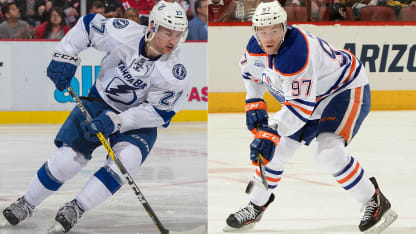Since there is no statistic that measures the number of goals that are prevented, it is difficult to statistically establish a player's defensive abilities, but there are some numbers that provide valuable clues of Couturier's importance.
For example, Couturier has been assigned 911:22 minutes of shorthanded time over his five NHL seasons, which ranks second among forwards to Jay McClement of the Carolina Hurricanes (1,028:31) over that time span.
At even strength, Couturier has started 1,588 shifts in the defensive zone, compared to 1,089 in the offensive zone. The resulting zone start percentage of 40.7 percent ranks 368th among the 391 active forwards to play at least 100 games over the past five seasons.
Early peaks
In baseball, peak-age models have been established for almost two decades. When applied to hockey, those same models indicate that a player's performance most commonly peaks at age 24, meaning that the Team North America roster is comprised exclusively of players already at their peak, or quickly developing towards it.
Conventional wisdom has always been that players peak closer to age 27, but that impression could be because older players have had more opportunity to prove themselves and to earn a greater share of the ice time. On a per-minute basis, the performance of most players is already on the decline by the late 20s.
Faceoff futility
One skill that doesn't decline with age, and actually improves throughout a player's career, is the ability to win faceoffs.
That's why one of the key challenges Team North America will have to overcome is in the faceoff circle. The seven centers on the North America roster have an average NHL career faceoff winning percentage of 44.6. Their best option is Sean Monahan of the Calgary Flames, who has won 49.3 percent of his career faceoffs, followed by Couturier (47.6).


















